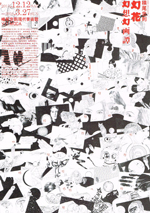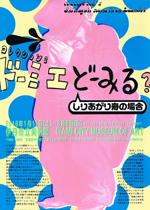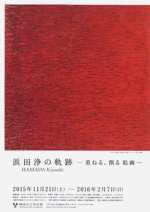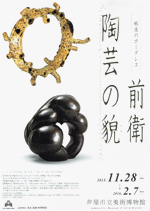 |
Picks is a monthly sampling of Japan's art scene, offering commentary by a variety of reviewers about exhibitions at museums and galleries in recent weeks, with an emphasis on contemporary art by young artists. |
 |
 |
 |
1 February 2016 |
 |
| 1 | 2 | |
 |
|
 |
 |
|
|
 |
 |
 |
 |
| Tadanori Yokoo: Genka Genso Genga-tan |
| 12 December 2015 - 27 March 2016 |
Yokoo Tadanori Museum of Contemporary Art
(Hyogo) |
 |
| Yokoo drew 371 monochrome illustrations for Genka (Fantasy Flowers), a historical novel by Harumi (Jakucho) Setouchi that was serialized in a newspaper in 1974 and 1975. The tale depicts the decline of the Muromachi Shogunate through the eyes of a female protagonist, but Yokoo's drawings are in a free, experimental, contemporary style that seems to have little if anything to do with Setouchi's text. This is the first time the entire series has been exhibited in one place. |
|
 |
 |
 |
 |
|
|
Shiriagari Zooms in on Daumier |
| 16 January - 6 March 2016 |
Itami City Museum of Art
(Hyogo) |
 |
| Manga artist Shiriagari Kotobuki (b.1958) displays new works inspired by Honore Daumier (1808-79), the legendary caricaturist who was active in 19th-century Paris. This homage to the French satirical tradition seems especially significant in the wake of last year's terrorist attack on the weekly Charlie Hebdo, as well as an excellent opportunity to get acquainted with Daumier. In that regard, coupling his works with those of a popular contemporary cartoonist is a stroke of curatorial genius. |
|
|
|
|

|
 |
 |
 |
|
Traces of Kiyoshi Hamada: Layered Paintings, Scraped Paintings |
|
21 November 2015 - 7 February 2016
|
Nerima Art Museum
(Tokyo) |
 |
| A Nerima favorite son deserving of wider recognition (he taught for many years in the ward's public school system), Hamada (b.1937) earned some notice for his woodcut art in the 1970s. Since then, however, he has been producing paintings -- notably surfaces layered with pigment or scraped paper -- whose tough physicality bursts the confines of conventional notions of "abstract" art. This retrospective introduces 47 works spanning his career. |
|
|
 |
 |
| Borderless Communication after 1945 |
|
28 November 2015 - 7 February 2016
|
|
Ashiya City Museum of Art and History
(Hyogo) |
 |
| Focusing on "Objet Pottery," an avant-garde ceramic art movement that arose in Kyoto after World War II, the show examines the activities of artists associated with the groups Shiko-kai and Sodei-sha, among them Kazuo Yagi, Shindo Tsuji, Sango Uno, Hikaru Yamada, Osamu Suzuki, and Yasuo Hayashi. The parallel display of paintings and sculptures by some of their contemporaries reinforces one's impression of the feverish artistic passions of that era. |
|
|
|
|
|
|
|

|
 |
 |
|
|
|
|
|
 |
|
|
|
|
|
|
|
 |
|
|
 |
|